Bikepacking Bags - With these panniers you are ready for every bikepacking adventure!
If you look up the term 'bikepacking' in the dictionary, you may not find a straightforward definition. Yet bikepacking is absolutely gaining popularity. Bikepacking has many similarities with backpacking except that you use a sports bike. Such bikes do not have luggage racks, so you need special bikepacking bags. Most bikepackers only bring the bare essentials for their trip - camping gear and some food - to ensure they ride with as little extra weight as possible. The goal is to discover as many beautiful places as possible by bike with as little luggage as possible. In this blog we will tell you which bikes are suitable for bikepacking trips and what sorts of bikepacking bags are available.
What type of bike do I need for bikepacking?
What types of bikepacking bags do I need?
- Saddle bag
- Frame bag
- Frame bag on top of the top tube
- Snack pack
- Accessory pack
- Handlebar bag
- Tips regarding bikepacking bags
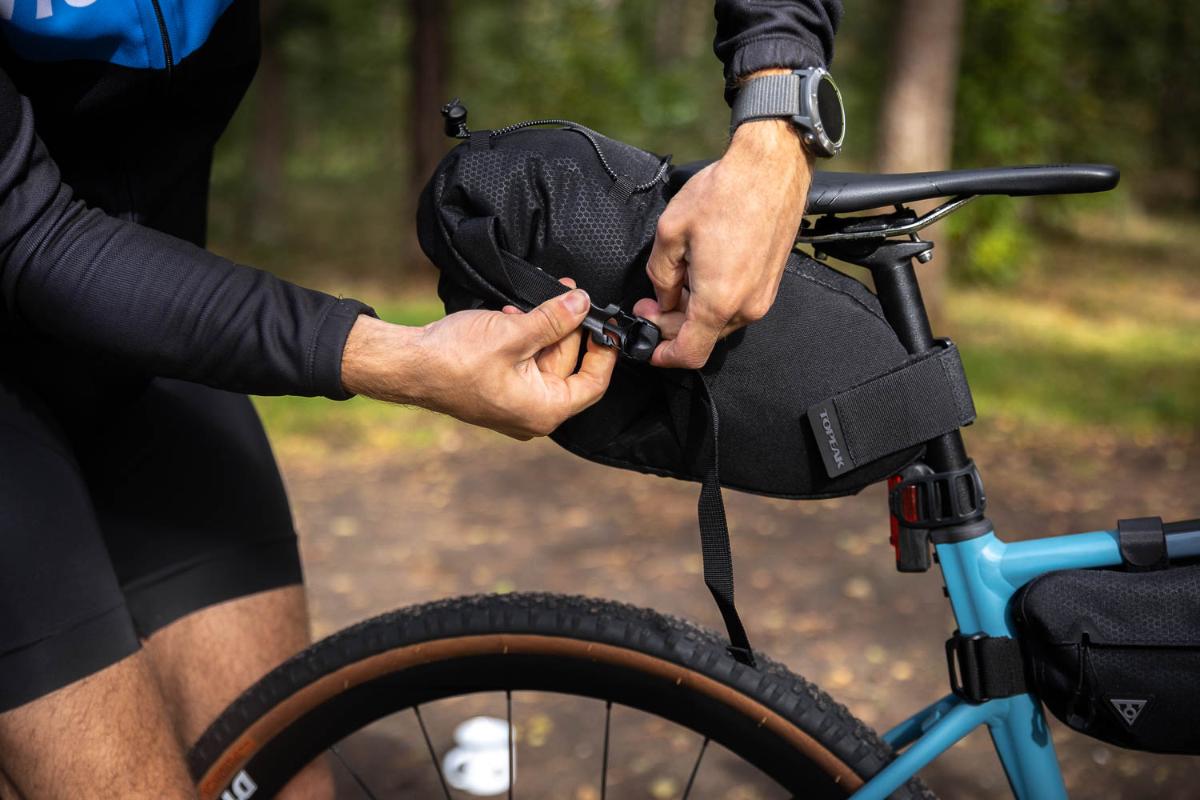
What type of bike do I need for bikepacking?
Different types of bicycles are suitable for bikepacking adventures. Which one is best for you depends mainly on the distances you’re going to ride, the type of terrain on which you will be riding, and how much gear you want to bring. We will discuss the pros and cons for each bike type.
Bikepacking with a road bike
Firstly, you can decide to use your road bike, for which there are several pros and cons. If you intend to ride mainly on paved roads, a road bike is a good choice. It is lightweight and made for speed, allowing you to cover long distances on a single day. Also, a road bike does not have many parts that can break or require serious maintenance on the road, so you don’t have to bring many spare parts.
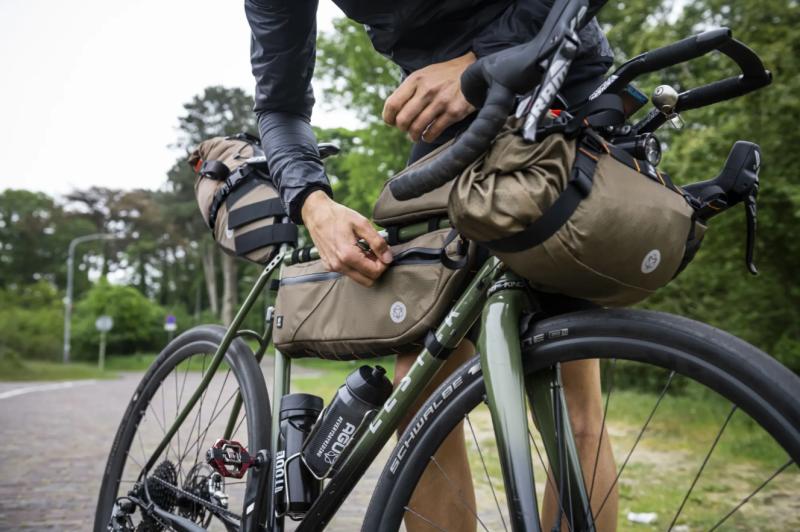
One disadvantage of a road bike is comfort. Your sitting position is not ideal for long-distance cycling, and you may develop physical complaints from spending many hours in the saddle. Want to be more comfortable on your road bike? Then you can opt for one with wider tyres, an endurance bike or a gravel bike.
Another disadvantage is that, with a road bike, you have to be careful about the weight of your luggage. The frame of a road bike is not made to carry several heavy bags. So, a road bike might be most suitable for a bikepacking trip that involves staying in hotels or B&Bs, for which you need a lot less luggage and weight than for a camping trip. Curious about a bikepacking trip on a road bike? In this blog Olle shares his opinion of the Topeak bikepacking bags he used on a three-day trip to the German Eifel region.
Bikepacking with a gravel bike
If you want to go off road during your bikepacking trip, you can choose to use a gravel bike. The tyres on gravel bikes are wider than on road bikes, which makes off-road riding easier.
A gravel bike is more comfortable than a road bike and lighter than a mountain bike. A gravel bike is very versatile and allows you to ride on asphalt, in the forest or both. In addition, you can mount various accessories on your gravel bike that allow you to bring extra luggage. This makes these bikes very suitable for a camping trip.
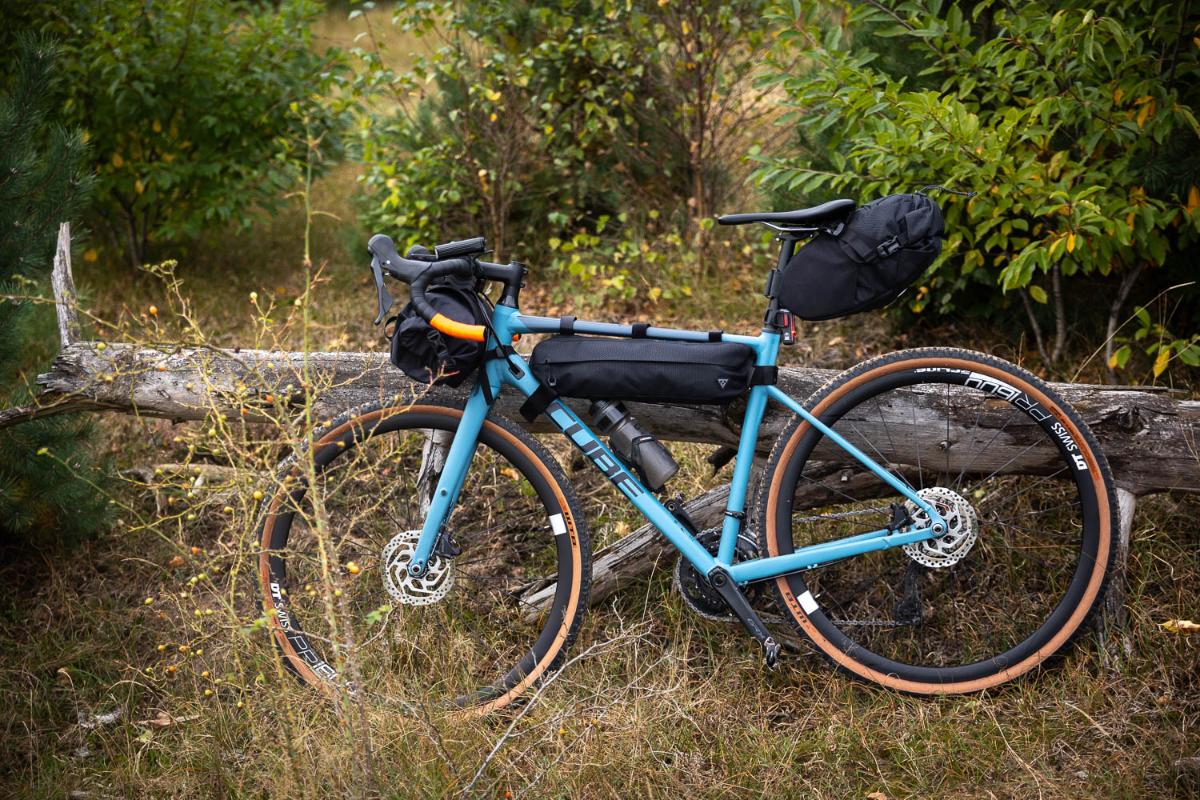
Bikepacking with a mountain bike
You may also decide to use your mountain bike for a bikepacking trip. An MTB with front suspension and wide tyres is particularly suitable for rough terrain. If your route includes rocky surfaces, a full-suspension MTB is your best choice because the combination of front and rear suspension makes for high comfort and control. A disadvantage of a mountain bike is that it is quite heavy itself, without any gear; if you add a lot of weight it will make riding harder and slower than with a gravel or road bike.
Bikepacking with a trekking bike
Trekking bikes are developed especially for those who want to cycle for many hours on end, such as on long day trips or cycling holidays. Such bikes are designed to handle high loads and to be robust as well as comfortable.
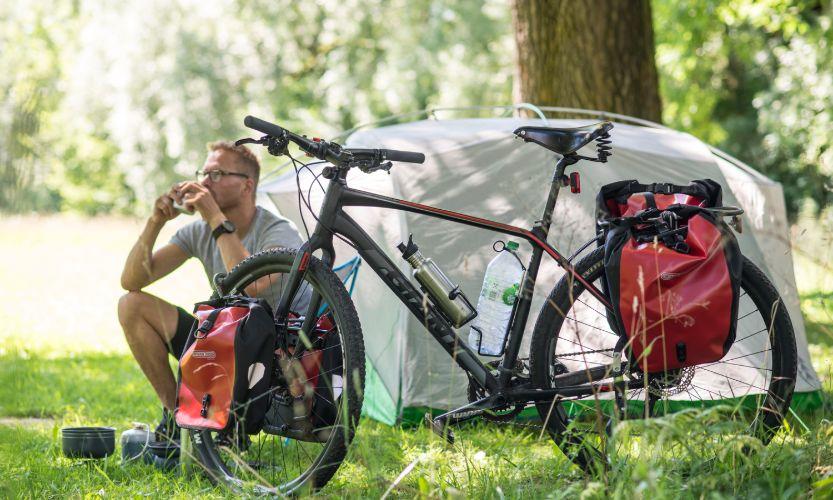
On a trekking bike you sit upright and have plenty of gears as well as good brakes. A particular advantage is that it comes with sturdy racks for secure luggage transport. Many trekking bikes also include a bike stand for easy and stable parking. They are, therefore, not sports bikes per se and are not really suitable for riding on rough terrain.
What types of bikepacking bags do I need?
Bikepacking bags are designed for use on bikes without luggage racks and can be attached to your frame, handlebars or seat post. For a good distribution of weight as well as comfort and ease of use both during and after cycling, it is important to give thought to what you’re going to put in which pannier. Try to avoid contact between luggage and your body and put things you may often need within easy reach. So, think carefully about what you really need to bring and whether you will actually use it. Try to add as little weight as possible.
Saddle bag
The main advantage of a saddle bag over a backpack is that it doesn't make you sweaty and/or cause pain in your back. Attaching the saddle bag properly is important because it can start to sway during cycling if not mounted or loaded correctly. Most saddle bags are attached to the saddle and seat post with Velcro, and are water-repellent or even waterproof. They generally roll up easily.
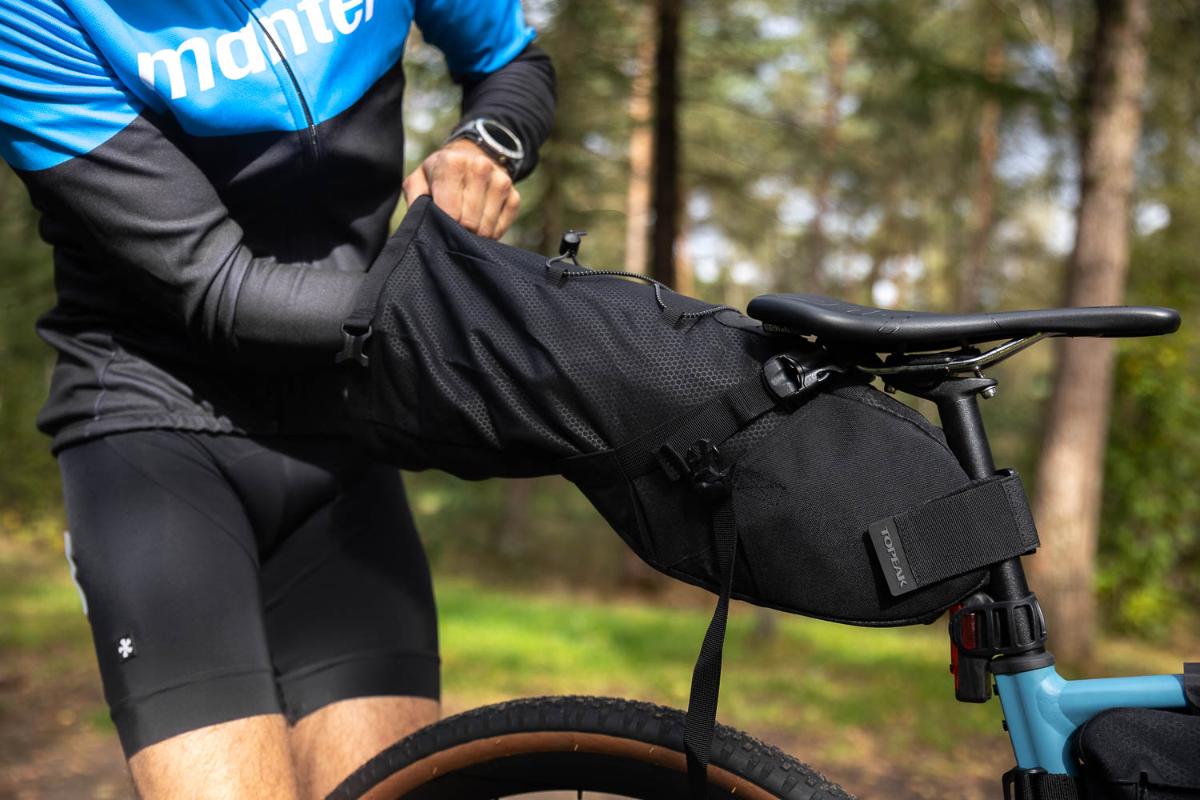
These bags can be used for light and larger items such as clothes, a sleeping mat or bag, or even a lightweight tent. Because the bag is located high on your bike, it should not be loaded with heavy gear, which would affect the bike's handling. So, make sure to put the heavier things in the bag first and push them as far towards the saddle as possible so that there is no empty space there.
Frame bag
Frame bags are easy to attach to your bike’s frame and give you extra storage space in addition to your other panniers. When choosing one, make sure that your legs do not rub against the bag and that your water bottles still fit and, if possible, that the bottle holders allow you to insert and remove the bottles from the side.
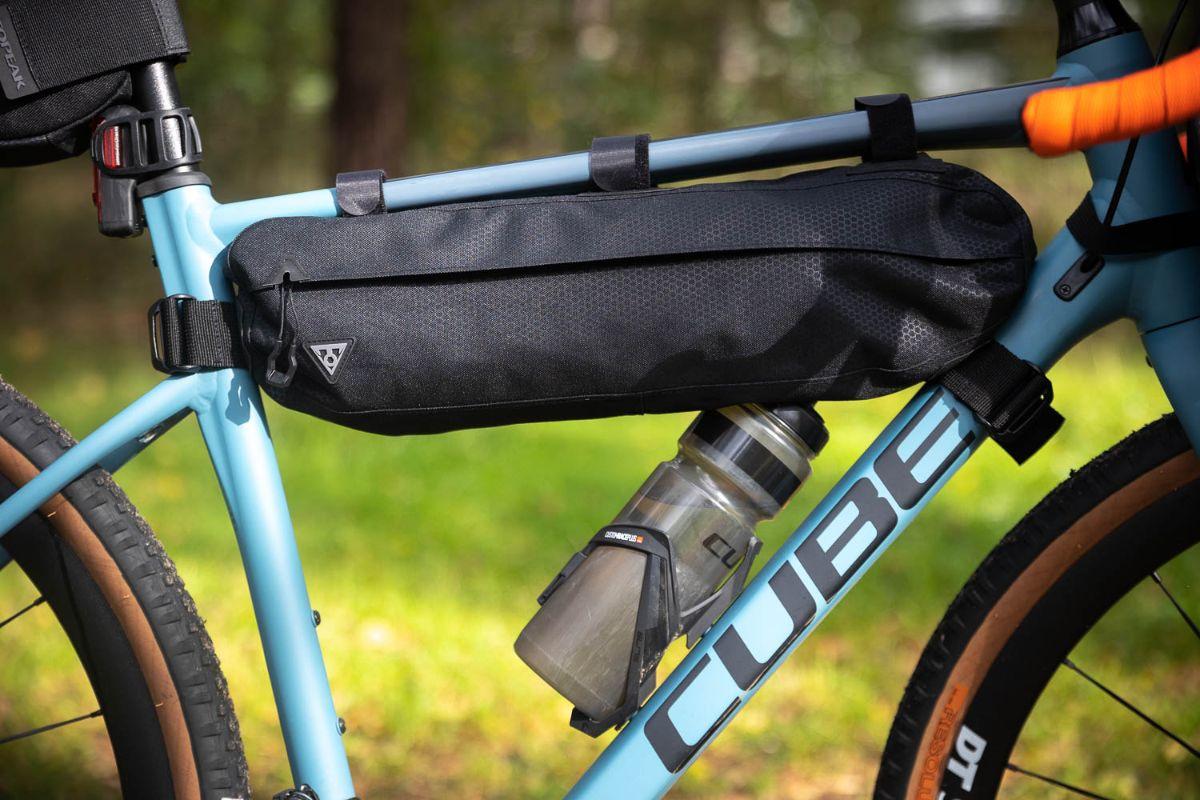
A frame bag is generally used to store the heaviest gear such as tools, a pump, cookware and clothes. Transporting such items centrally on your bike is best for the weight distribution. A frame bag lets you organise your things well, and so you can also use it to stash the sports nutrition you need during your ride and can easily reach there.
Frame bag on top of the top tube
This is a smaller bag that sits near the handlebars on top of the horizontal frame tube. Such bags can usually also be mounted near the saddle. They are ideal for carrying small things you want to have within easy reach, such as your wallet, phone, powerbank, multi tool, spare inner tube and possibly an energy bar or energy gel. Some of these frame bags have a transparent pocket on top that fits a map or phone; here these are protected from the elements while allowing you to navigate as you ride.
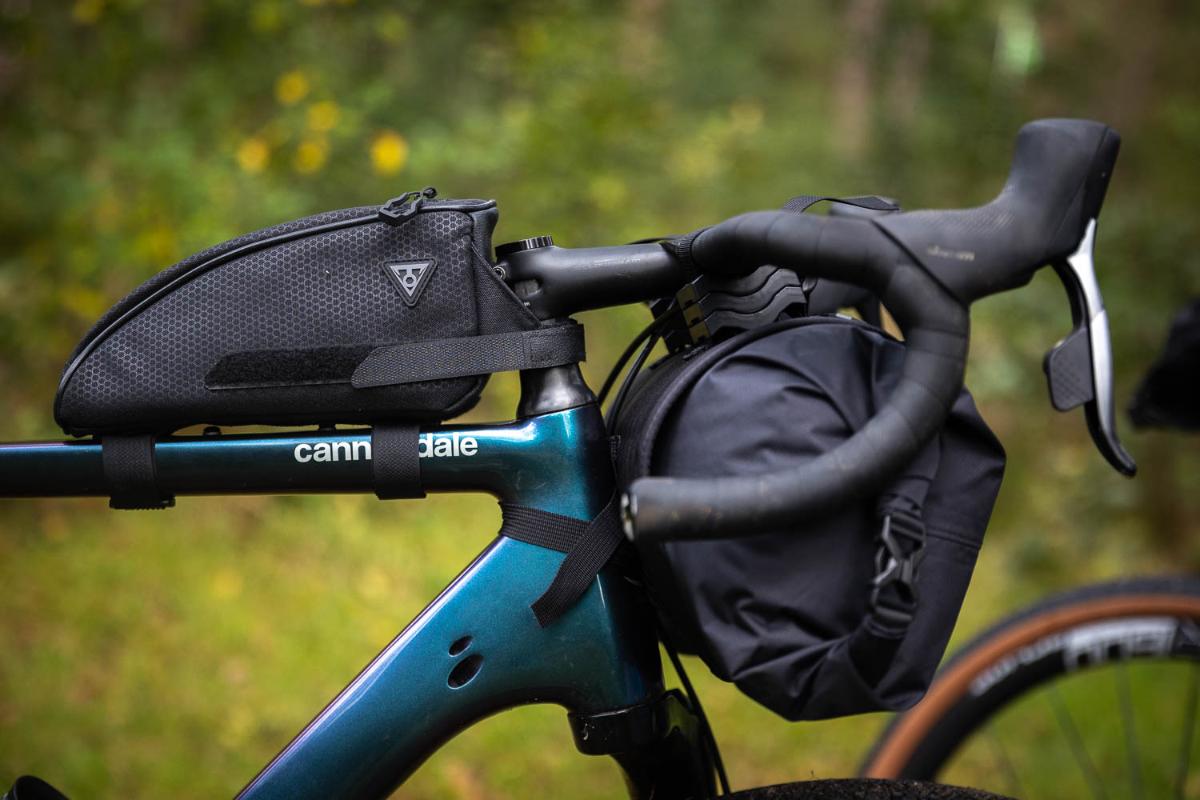
Snack pack
The snack pack has been developed to give you easy access to your snacks on the go. The bag is to be mounted to the stem and can also hold an extra water bottle.
Accessory pack
An accessory pack is to be mounted on top of the handlebar bag, where it gives you easy access to essentials such as your phone, snacks or raincoat. Many of these bags can also be used as a waist bag.
Handlebar bag
A handlebar bag is sort of a roll pack that hangs in front of the handlebars. A handlebar bag has a roll opening on each side. When using such a bag on a gravel or road bike, make sure that it fits properly between the drops of the bars. And, of course, that it does not impede shifting and braking.
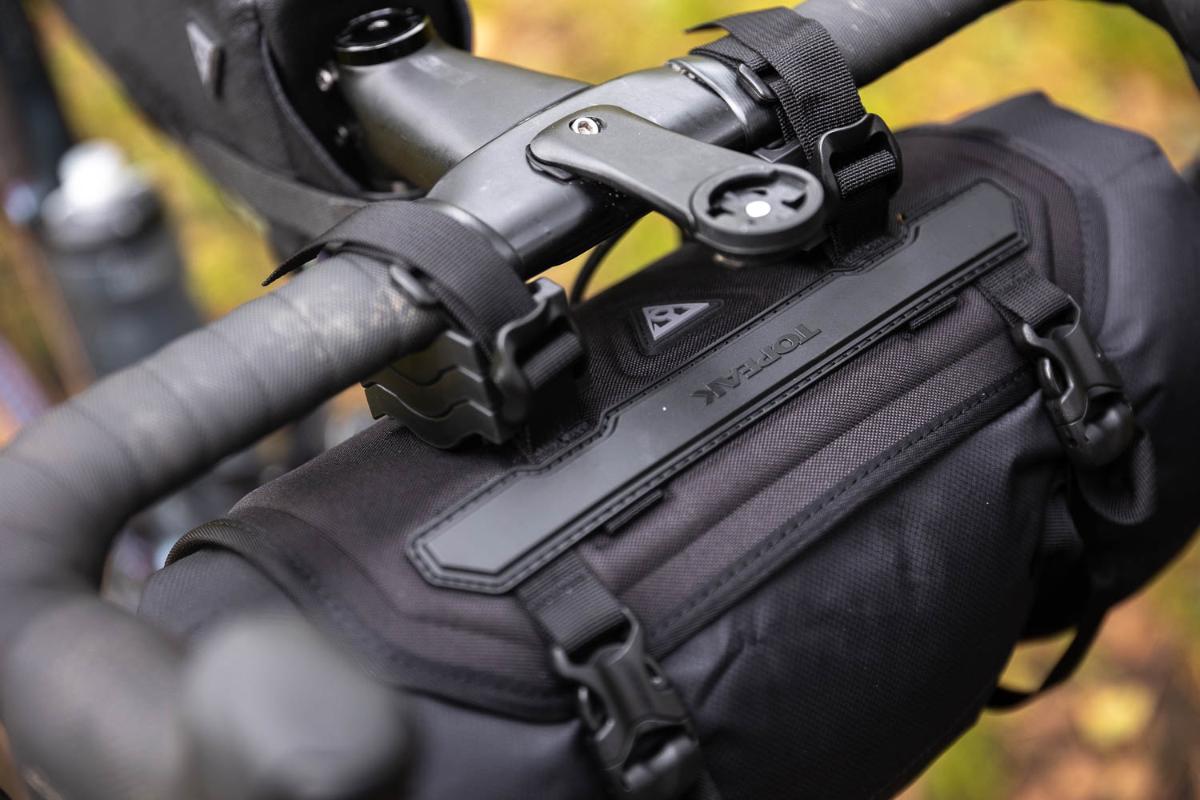
Avoid putting too heavy stuff in the handlebar bag because it will affect your steering. It is okay to put some weight in it though because with the bag hanging from your handlebars the weight is quite easy to control. A handlebar bag is ideal for transporting items such as a sleeping bag, tent or sleeping mat, toiletries and clothes you want to wear after cycling. In the list below we distinguish between large and compact handlebar bags.Large handlebar bags for bikepacking
Compact handlebar bags for bikepacking

Tips regarding bikepacking bags
- To prevent paint damage to your bike, you can apply some protective tape/stickers at the contact points where you mount your bags. No matter how well and tightly the bags are attached, cycling will always cause them to move/vibrate/loosen a bit.
- A saddle bag can also serve as a mudguard in wet conditions. If you use a saddle bag, there is usually no more room for a mudguard on the seat post.
- Pay due attention to the order of packing. Make sure to pack things you need to have within easy reach last; if it starts to rain, for example, you don't want your mackintosh to be at the bottom of a bag.
- Some items that you don’t mind getting wet, such as pans, mugs etc. can hang on the outside of your bags. Just make sure they cannot clatter against each other as that will drive you crazy when cycling!
- Consider increasing your safety. It is usually easy to attach bike lights to saddle bags and handlebar bags. Or attach them to your bike helmet. And add reflective elements to your bikepacking bags.
- Depending on the climate and weather conditions in which you’ll be riding most you can choose to buy water-repellent or waterproof bags. If you have water-repellent bags, you can put your dry clothes in a separate plastic bag or a drybag so that they remain dry if you get caught in a rain shower.
Mees Janssen
I am very occupied with everything that has to do with cycling in my spare time. The fact that I get to do this during my job as well makes it all the more special. Since I live in Arnhem, I like to go cycling in my “backyard” (de Posbank) with my road bike or mountain bike. Besides cycling myself, I also love to watch professional cycling on the tv. My television is doing overtime during the summer, because I like to follow all the big cycling tours like the Giro, the Tour de France and the Vuelta. It may come as no surprise that when the Giro d´Italia crossed Arnhem in 2016, I was over the moon!
Related posts

Gift ideas for Christmas: a perfect present for every cyclist!
8 December 2023Gift ideas for Christmas: a perfect present for every cyclist!The Christmas holidays are just around the corner! If you ...
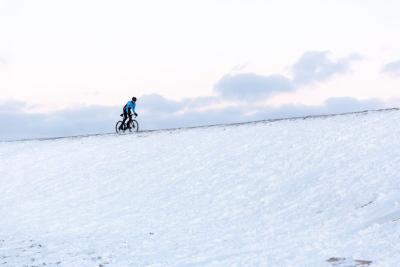
What winter cycling gear do I need for which temperature? [Buyer's Guide]
18 October 2023The leaves on the trees are slowly turning shades of red and yellow ...
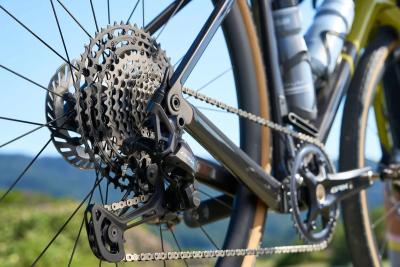
Shimano Launches New Mechanical 12-speed Gravel GRX 820 and 105 R7100 Road Bike Groupsets
31 August 2023The cycling world is constantly innovating to improve performance and the cycling experience ...
 Nederland
Nederland België
België Deutschland
Deutschland United Kingdom
United Kingdom Finland
Finland Ireland
Ireland Luxembourg
Luxembourg Portugal
Portugal Poland
Poland Österreich
Österreich France
France España
España Italia
Italia Sverige
Sverige Danmark
Danmark



























































































































































































































































